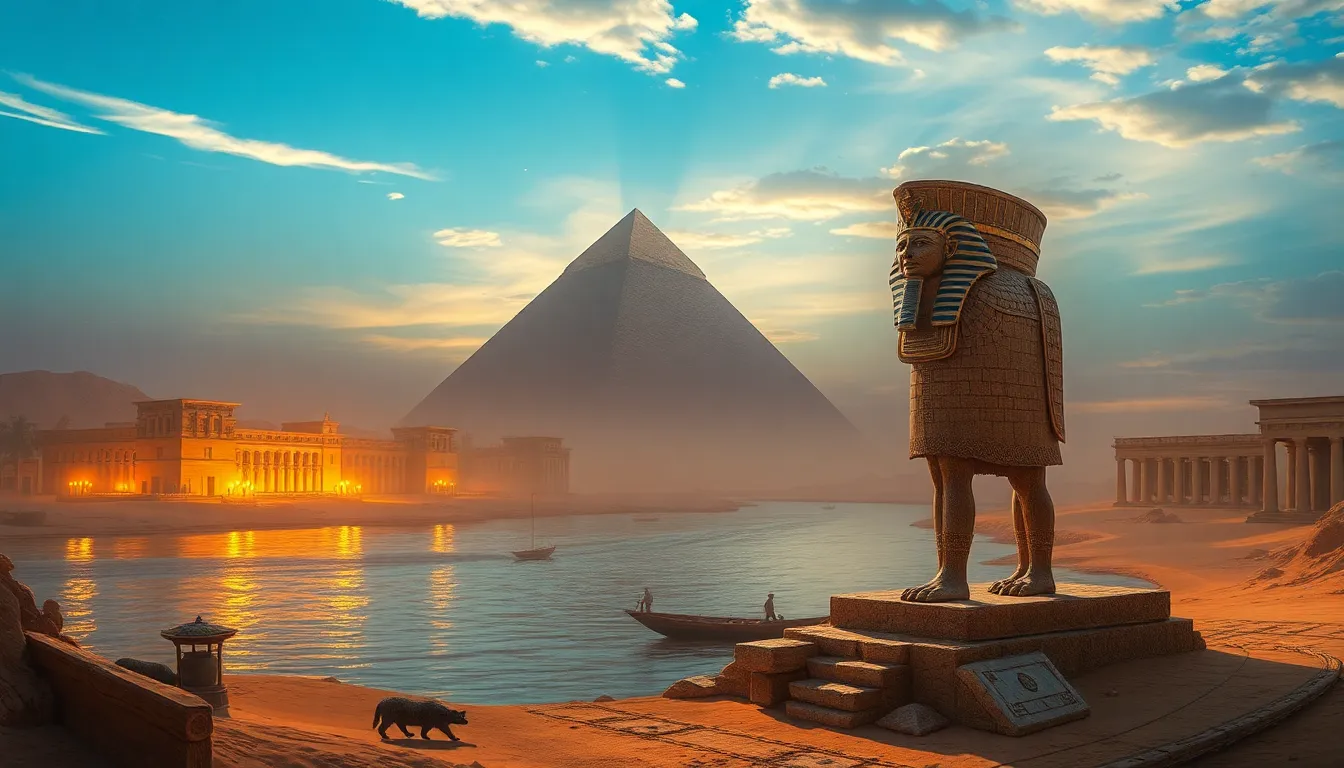The Connection Between the Nile and Egyptian Civilization
I. Introduction
The Nile River, one of the longest rivers in the world, has been the lifeblood of Egypt since ancient times. Its waters have nourished the land, supported agriculture, and facilitated trade, making it a central element of Egyptian civilization. This article explores the profound relationship between the Nile and various aspects of Egyptian culture, economy, and society, highlighting how this magnificent river shaped the life of one of the world’s oldest civilizations.
II. The Geographical Importance of the Nile
The Nile stretches approximately 6,650 kilometers, flowing through eleven countries before emptying into the Mediterranean Sea. Its unique characteristics include:
- Length: The Nile is the longest river in the world, a crucial artery for transportation and communication.
- Flow: The river flows northward, which is unusual for major rivers, influencing trade and settlement patterns.
- Tributaries: The Nile has various tributaries that contribute to its water supply, including the Blue Nile and the White Nile.
The landscape of Egypt is predominantly desert, and the Nile creates a fertile strip of land, known as the Nile Valley, where agriculture flourishes. Seasonal flooding, a natural occurrence that replenishes the soil with nutrient-rich silt, has historically provided the irrigation essential for farming.
III. Agricultural Development Driven by the Nile
The Nile’s significance in agriculture cannot be overstated. The annual flooding brought life to the arid landscape, allowing ancient Egyptians to cultivate staple crops such as:
- Wheat
- Barley
- Flax
To maximize agricultural output, ancient Egyptians developed sophisticated irrigation techniques, including:
- The use of basins to capture floodwaters.
- Canals to distribute water to fields.
- Shadufs, a hand-operated device for lifting water from the river.
The reliable water supply from the Nile enabled population growth and the establishment of thriving communities along its banks, forming the backbone of Egyptian society.
IV. Economic Impact of the Nile on Egyptian Civilization
The Nile served not only as a source of sustenance but also as a vital economic resource. Its impact on Egyptian trade and commerce included:
- Trade Routes: The river facilitated the movement of goods, linking Upper and Lower Egypt and enabling trade with neighboring regions.
- Resources: The Nile provided essential resources such as:
- Fish, which formed a significant part of the diet.
- Papyrus, used for writing and as a building material.
- Minerals, including gold, which were mined from the riverbanks.
- Commerce: The emergence of market systems along the banks of the Nile allowed for the exchange of goods, fostering economic development.
V. The Nile in Religion and Mythology
The Nile was not just a physical presence; it was deeply woven into the fabric of Egyptian religion and mythology. Notable aspects include:
- Deity Hapi: The Nile was personified in the form of Hapi, the god of the inundation, symbolizing fertility and abundance.
- Myths and Stories: Ancient texts often featured the Nile in creation myths and other stories, emphasizing its significance in the cosmos.
- Rituals and Festivals: Seasonal floods were celebrated with festivals, marking the life-giving properties of the river and the agricultural cycle.
VI. The Nile’s Influence on Culture and Society
The cultural significance of the Nile is reflected in various aspects of ancient Egyptian life:
- Artistic Depictions: The Nile was frequently portrayed in ancient Egyptian art, symbolizing life and fertility.
- Literature: The river is mentioned in numerous historical texts, poetry, and religious literature, emphasizing its importance.
- Social Structure: Communities formed along the banks of the river, leading to the development of a complex social hierarchy, with farmers, traders, and priests all playing essential roles.
VII. Challenges and Changes Throughout History
Despite its critical role, the Nile has faced numerous challenges throughout history:
- Environmental Changes: Shifts in climate and geological activity have historically affected the river’s flow, with implications for agriculture and settlement.
- Human Impact: Modern irrigation practices, agriculture, and urbanization have altered the natural landscape and flow of the river.
- Modern Challenges: Issues such as pollution, dam construction (e.g., the Aswan High Dam), and water management have significant implications for the Nile and its surrounding ecosystems.
VIII. Conclusion
The Nile River has played a multifaceted role in shaping Egyptian civilization, influencing its agriculture, economy, religion, and culture. Its waters have not only nurtured the land but have also fostered a rich and complex society that has endured through millennia. As we reflect on the lasting legacy of the Nile in contemporary Egypt, it is essential to recognize the importance of preserving this vital resource and its historical significance. The river remains a symbol of life, prosperity, and continuity for the people of Egypt, embodying the spirit of a civilization that has thrived along its banks for thousands of years.




